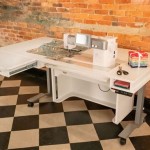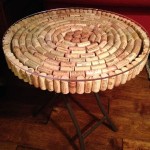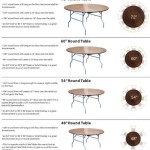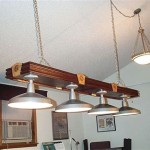Glass Coffee Table With Stone Base: An Examination of Design, Materials, and Functionality
The glass coffee table with a stone base represents a fusion of contrasting materials, each contributing unique aesthetic and functional properties to the overall design. These tables offer a compelling alternative to traditional all-wood or all-metal designs, providing a visually striking centerpiece for living rooms, reception areas, and other spaces where a combination of elegance and durability is desired. Understanding the nuances of the materials used, the design considerations, and the practical applications of these tables is crucial for making informed purchasing decisions and appreciating their inherent value.
Material Properties and Their Impact on Design
The selection of glass and stone dictates the table's aesthetic appeal, structural integrity, and longevity. Different types of glass offer varying levels of clarity, thickness, and resistance to impact. Similarly, the choice of stone, whether it be marble, granite, travertine, or slate, influences the table's color palette, texture, and overall weight. Examining the properties of these materials is essential for understanding their contribution to the final product.
Glass Selection: The most common type of glass used in these tables is tempered glass. Tempered glass undergoes a heat treatment process that significantly increases its strength and resistance to thermal stress. This makes it a safer option compared to standard annealed glass. If broken, tempered glass shatters into small, relatively harmless pieces, reducing the risk of serious injury. The thickness of the glass top is also a critical factor. Thicker glass offers greater stability and can support heavier objects without bending or cracking. The standard thickness generally ranges from 10mm to 19mm or more, depending on the size and intended weight-bearing capacity of the table.
The clarity of the glass is another important consideration. Clear glass showcases the stone base and its natural texture, whereas tinted or frosted glass offers a more subdued and diffused aesthetic. Low-iron glass, often referred to as "starphire" glass, provides exceptional clarity and minimizes the greenish hue that is sometimes present in standard clear glass. This type of glass is particularly well-suited for designs where the color and texture of the stone base are meant to be prominently displayed.
Stone Selection: The choice of stone for the base significantly impacts the overall look and feel of the table. Marble, with its intricate veining and polished surface, exudes luxury and sophistication. Granite, known for its durability and resistance to scratches and stains, offers a more robust and practical option. Travertine, with its porous texture and earthy tones, provides a rustic and natural aesthetic. Slate, with its dark, matte finish, adds a contemporary and minimalist touch. Each type of stone possesses unique characteristics that contribute to the table's overall design and visual appeal.
The finish of the stone is also a key consideration. Polished stone provides a smooth, reflective surface that enhances the stone's natural colors and patterns. Honed stone offers a matte finish that is less prone to scratches and stains. Tumbled stone provides a textured, rustic appearance that adds depth and character. The selection of the stone finish should be carefully considered to complement the overall design aesthetic and the intended use of the table.
Beyond aesthetics, the weight of the stone base contributes significantly to the table's stability. A heavier stone base provides a more solid foundation, preventing the table from easily tipping over. This is particularly important for tables with larger glass tops or those intended for use in high-traffic areas. The density and structural integrity of the stone should be assessed to ensure that it can adequately support the glass top and any items placed upon it.
Design Considerations and Aesthetic Integration
The design of a glass coffee table with a stone base involves careful consideration of proportion, balance, and the interplay between the two materials. The shape and size of the glass top should complement the form and dimensions of the stone base. The overall design should be aesthetically pleasing and functional, providing a stable surface for placing drinks, books, and decorative objects while also serving as a visual focal point in the room.
Shape and Proportion: Common shapes for the glass top include rectangular, square, round, and oval. The choice of shape depends on the overall design aesthetic and the intended use of the table. A rectangular or square glass top provides ample surface area for placing multiple items, while a round or oval glass top offers a more fluid and organic look.
The proportions of the glass top and stone base should be carefully considered to achieve visual balance. A large, heavy stone base may require a proportionally larger glass top to avoid appearing disproportionate. Conversely, a small, delicate stone base may be better suited to a smaller glass top. The height of the table is also an important factor. A coffee table that is too high or too low can be uncomfortable to use and visually unappealing.
Style and Aesthetic: Glass coffee tables with stone bases can be designed to complement a wide range of interior design styles. A marble base with a clear glass top can add a touch of elegance and sophistication to a traditional or contemporary living room. A granite base with a tinted glass top can create a more modern and minimalist look. A travertine base with a textured glass top can add a rustic and natural element to a farmhouse or bohemian-inspired space.
The design of the stone base itself can also vary considerably. Some bases are simple and geometric, while others are more ornate and sculpted. The choice of design depends on the overall aesthetic and the desired level of visual interest. A simple, understated base allows the glass top to take center stage, while a more elaborate base can serve as a statement piece in its own right.
Integration with Surrounding Décor: A well-designed glass coffee table with a stone base should seamlessly integrate with the surrounding décor. The color and texture of the stone base should complement the other colors and textures in the room, such as the upholstery of the sofa and chairs, the wall color, and the flooring. The style of the table should also be consistent with the overall design aesthetic of the space. A modern coffee table may look out of place in a traditional living room, and vice versa.
Functionality and Practical Considerations
Beyond aesthetics, the functionality and practical considerations of a glass coffee table with a stone base are paramount. The table should be durable, stable, and easy to maintain. The materials used should be resistant to scratches, stains, and other forms of damage. The table should also be easy to clean and keep looking its best.
Durability and Stability: The combination of tempered glass and a solid stone base provides excellent durability and stability. Tempered glass is significantly stronger than standard glass and is less likely to crack or shatter. The weight of the stone base provides a solid foundation, preventing the table from easily tipping over. The choice of stone should also be considered in terms of durability. Granite and slate are particularly resistant to scratches and stains, while marble and travertine may require more careful maintenance.
Maintenance and Cleaning: Maintaining a glass coffee table with a stone base is relatively straightforward. The glass top can be easily cleaned with a glass cleaner and a soft cloth. The stone base may require periodic cleaning with a mild soap and water. It is important to avoid using abrasive cleaners or harsh chemicals that could damage the surface of the stone. Depending on the type of stone, sealing the base may be required periodically to protect it from stains and moisture.
Safety Considerations: Safety is an important consideration, especially in households with children or pets. Tempered glass is a safer option than standard glass, as it shatters into small, relatively harmless pieces if broken. The edges of the glass top should be smooth and rounded to prevent cuts or scrapes. The weight of the stone base should be sufficient to prevent the table from easily tipping over. It is also important to ensure that the table is placed on a level surface to prevent it from rocking or wobbling.
Weight and Transport: The weight of a glass coffee table with a stone base can be significant, especially if the stone base is large and heavy. This can make it difficult to move or transport the table. It is important to consider the weight of the table when planning for delivery and installation. It may be necessary to hire professional movers to safely transport and install the table. Also note the weight in relation to floor coverings, as soft flooring could be damaged by the weight of the table over time.

Stone Coffee Table Divine Design Center

Table With Base In Stone And Top Glass Idfdesign

Coffee Table With Base Made Of Stone Top In Glass Idfdesign

Stone International Clepsy Glass Top Square Coffee Table With Marble Base

Coffee Table With Square Top In Glass Stone Base Idfdesign

The 19 Best Glass Coffee Tables To Now

Stone Coffee Table Top Furniture Tables

Tempered Glass Coffee Table Natural Stone Base Marble Modern Luxury China Made In Com

Lotus Hand Carved Oval Marble Coffee Table Glass Top By Stephanie Odegard Sr Hughes

Tempered Glass Coffee Table Natural Stone Base Marble Modern Luxury China Made In Com
Related Posts








